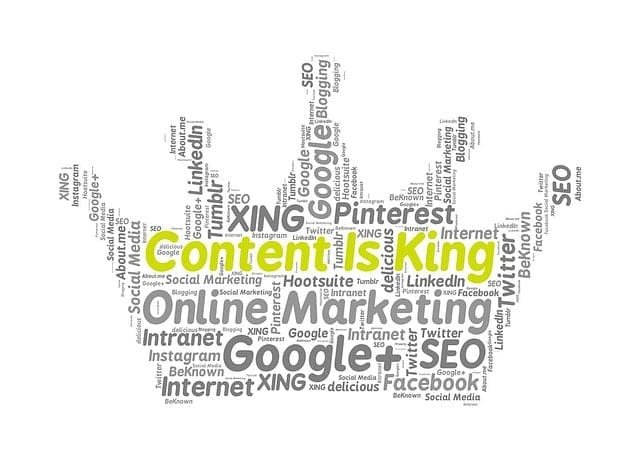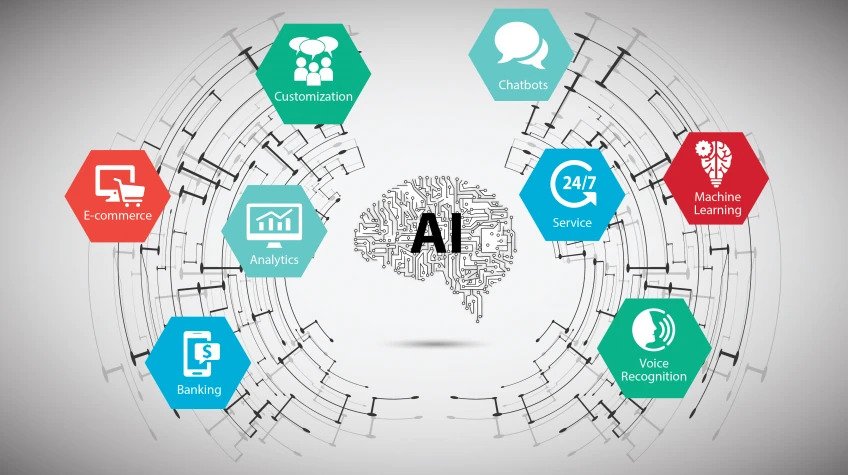The world of content creation is changing fast, and artificial intelligence (AI) is at the forefront of this transformation. For experts in the field, understanding how to harness the power of AI can be a game-changer. This article will explore practical tips and strategies for using AI in content creation, focusing on how experts can leverage this technology to enhance their work.
Understanding AI in Content Creation
What is AI?
AI, or artificial intelligence, refers to machines designed to mimic human intelligence. In content creation, AI can analyze text, generate ideas, optimize content for SEO, and even write articles. These tools use complex algorithms and vast datasets to understand language and context, making them valuable assistants for writers.
How AI Works in Writing
AI writing tools work by processing and analyzing large amounts of text data. They understand grammar, style, and context, enabling them to provide suggestions for improving your writing.
Whether it’s correcting grammar mistakes, suggesting synonyms, or optimizing content for search engines, AI can significantly enhance the quality and efficiency of your writing process.
Benefits of Using AI in Content Creation
Enhanced Efficiency
One of the most significant benefits of using AI in content creation is improved efficiency. AI tools can handle repetitive tasks, such as checking grammar and spelling, allowing you to focus on more creative aspects of writing.
This can save you a considerable amount of time and effort.
Improved Quality
AI tools can help improve the quality of your content by providing real-time feedback and suggestions. They can identify errors and offer corrections, ensuring that your writing is polished and professional.
Additionally, AI can help you maintain a consistent tone and style, which is crucial for building a strong brand voice.
Personalized Content
AI can analyze your audience’s preferences and behavior, enabling you to create personalized content that resonates with them. By understanding what your audience likes and dislikes, you can tailor your content to meet their needs and interests, leading to higher engagement and satisfaction.
AI Tools for Content Creation
Grammarly
Grammarly is one of the most popular AI writing tools. It offers real-time grammar and spelling checks, style suggestions, and readability scores.
It’s an excellent tool for improving the overall quality of your writing and ensuring that your content is error-free.
Hemingway Editor
The Hemingway Editor helps you write clear and concise content. It highlights complex sentences, passive voice, and adverbs, suggesting simpler alternatives.
This can help you write in a more direct and engaging style, making your content more readable and accessible.
Jasper (Formerly Jarvis)
Jasper is an AI-powered content creation tool that can generate blog posts, social media updates, and ad copy. It uses advanced algorithms to understand your prompts and create high-quality content that matches your style and tone.
SurferSEO
SurferSEO is an AI tool designed to optimize your content for search engines. It analyzes the top-ranking pages for your target keywords and provides recommendations for improving your content’s SEO.
This can help you rank higher in search engine results and attract more organic traffic.
Practical Tips for Using AI in Content Creation
Start with a Clear Outline
Before using AI tools, start with a clear outline of your content. This will give you a structured framework to work within, making it easier to integrate AI suggestions.
Outline your main points, subpoints, and any key details you want to include. This will help you stay focused and organized as you write.
Use AI for Research
AI can help you with research by finding relevant information quickly and efficiently. Use AI-powered search engines to gather data and insights on your topic.
This can save you time and provide you with a wealth of information to support your writing.
Edit with AI Assistance
After writing your first draft, use AI tools to edit and polish your content. Tools like Grammarly and Hemingway can help you identify errors and improve readability.
Review the suggestions carefully and make any necessary changes to enhance the quality of your writing.
Learn from AI Feedback
One of the most valuable aspects of using AI is the feedback it provides. Take the time to review and understand the suggestions offered by AI tools.
This can help you learn and improve your writing skills over time. Pay attention to common errors and patterns in the feedback, and work on addressing these issues in your future writing.
Overcoming Common Challenges with AI
Battling Writer’s Block
Writer’s block can be a significant hurdle for any writer. AI tools can help you overcome this by generating prompts and ideas. If you’re stuck, try using an AI content generator like Jasper to create a starting point.
Even if you don’t use the generated content directly, it can spark new ideas and help you get back on track.
Maintaining Your Unique Voice
While AI can assist with content creation, maintaining your unique voice is crucial. AI tools can sometimes produce content that sounds generic. Review and tweak AI-generated content to ensure it aligns with your style and tone.
Use AI as a helper, but let your personality and expertise shine through in your writing.
Ensuring Accuracy
AI tools can sometimes make mistakes or provide inaccurate information. Always fact-check AI-generated content to ensure its accuracy.
Use AI as a first draft or a brainstorming partner, but rely on your knowledge and research skills to verify the information and add depth to your content.
AI for Different Types of Content

Blog Posts
Blogging is one of the most common uses for AI in content creation. AI tools can help you generate ideas, structure your posts, and optimize them for SEO.
Start by brainstorming topics with AI tools and use their suggestions to create a compelling outline. As you write, use AI to refine your content and ensure it’s engaging and error-free.
Social Media Content
Creating engaging social media content can be time-consuming. AI tools can help by generating posts that are tailored to your audience’s preferences.
Tools like Buffer and Hootsuite use AI to schedule posts at optimal times and analyze their performance. This can help you maintain a consistent social media presence and engage with your followers more effectively.
Email Newsletters
Email marketing is a powerful tool for building relationships with your audience. AI can help you craft personalized and compelling email newsletters.
Use AI to segment your audience and tailor your messages to their interests. AI tools can also optimize your subject lines and content for higher open and click-through rates.
Product Descriptions
For e-commerce businesses, writing product descriptions can be a repetitive task. AI can help you generate unique and engaging product descriptions quickly.
Tools like Copy.ai can create descriptions that highlight the features and benefits of your products, making them more appealing to potential buyers.
Enhancing SEO with AI
Keyword Research
AI can streamline the keyword research process by analyzing search trends and suggesting relevant keywords. Use tools like Ahrefs and SEMrush to find keywords that are likely to drive traffic to your site.
Incorporate these keywords naturally into your content to improve your SEO rankings.
Content Optimization
AI tools like SurferSEO can help optimize your content for search engines. They analyze top-ranking pages for your target keywords and provide recommendations for improving your content.
This includes suggestions for keyword placement, content length, and readability. By following these recommendations, you can increase your chances of ranking higher in search engine results.
Analyzing Competitor Content
Understanding what works for your competitors can provide valuable insights for your own content strategy. AI tools can analyze your competitors’ websites, identifying their top-performing content and SEO strategies.
Use this information to create content that fills gaps or offers a unique perspective, giving you a competitive edge.
Ethical Considerations in AI Content Creation
Transparency and Disclosure
When using AI to create content, it’s important to be transparent with your audience. Let them know when AI tools have been used in the creation process.
This builds trust and ensures that your audience understands the role AI plays in your content.
Avoiding Plagiarism
AI tools can sometimes produce content that closely resembles existing work. Always use plagiarism detection tools to ensure your content is original.
Give credit where it’s due and avoid presenting AI-generated content as entirely your own without proper attribution.
Addressing Bias
AI algorithms can sometimes exhibit bias based on the data they are trained on. Be mindful of this and regularly review AI-generated content for any unintended bias.
Strive to use diverse and inclusive data sets to train AI tools, ensuring that your content is fair and representative.
The Future of AI in Content Creation
Continuous Improvement
AI technology is constantly evolving, with new tools and features being developed regularly. Stay up-to-date with the latest advancements in AI and content creation.
Experiment with new tools and techniques to find what works best for you and your audience.
Human and AI Collaboration
The future of content creation lies in the collaboration between humans and AI. While AI can handle repetitive tasks and provide valuable insights, human creativity and critical thinking are irreplaceable.
Use AI to enhance your workflow, but always add your personal touch to ensure your content is unique and engaging.
Ethical Use and Regulation
As AI becomes more integrated into content creation, ethical considerations will become increasingly important. Advocate for responsible AI use and support regulations that ensure transparency, fairness, and accountability.
By doing so, you can help shape the future of AI in a way that benefits everyone.
AI in Content Marketing Strategies

Content Planning and Strategy
Effective content marketing starts with a solid plan. AI can assist in developing a comprehensive content strategy by analyzing market trends, audience behavior, and competitor activities.
Tools like MarketMuse and BuzzSumo provide insights into what type of content resonates with your target audience and help you identify gaps in your current strategy.
Audience Segmentation
Understanding your audience is crucial for effective content marketing. AI tools can analyze vast amounts of data to segment your audience based on various factors such as demographics, interests, and online behavior.
This allows you to tailor your content to different audience segments, increasing relevance and engagement.
Predictive Analytics
AI can use predictive analytics to forecast future trends and audience behaviors. This can help you stay ahead of the curve and create content that meets the evolving needs of your audience. By leveraging predictive analytics, you can make data-driven decisions that enhance your content marketing strategy.
AI and Video Content Creation
Script Writing
AI can assist in writing scripts for video content, ensuring they are engaging and optimized for your target audience. Tools like ScriptBook can analyze movie scripts and predict their success, providing valuable insights for content creators.
For marketing videos, AI can suggest compelling narratives that resonate with viewers.
Video Editing
AI-powered video editing tools like Magisto and Lumen5 can automate the editing process, making it easier to create professional-looking videos.
These tools use AI to analyze video footage and automatically edit it into a cohesive and engaging final product. This can save time and effort, allowing you to focus on the creative aspects of video production.
Enhancing Engagement
AI can help enhance video engagement by analyzing viewer behavior and suggesting improvements.
For example, AI tools can recommend optimal video lengths, highlight key moments, and suggest calls-to-action that increase viewer interaction. By using these insights, you can create videos that capture and retain your audience’s attention.
AI in Content Distribution
Optimizing Publishing Schedules
AI can analyze when your audience is most active and suggest the best times to publish your content.
This ensures maximum visibility and engagement. Tools like CoSchedule and Buffer use AI to recommend optimal posting schedules based on historical data and audience behavior.
Automating Content Distribution
Managing multiple content distribution channels can be challenging. AI tools can automate this process, ensuring your content reaches the right audience at the right time.
Platforms like Hootsuite and Sprinklr can schedule and post content across various social media channels, track performance, and provide insights for optimization.
Measuring Performance
AI can provide detailed analytics on how your content is performing across different channels.
This includes metrics such as engagement rates, click-through rates, and conversion rates. By analyzing this data, you can identify what’s working and what needs improvement, allowing you to refine your content distribution strategy.
AI and Content Personalization
Dynamic Content Creation
AI can create dynamic content that changes based on user behavior and preferences. For instance, websites can display personalized content recommendations to visitors based on their browsing history.
This increases relevance and engagement, making users more likely to interact with your content.
Email Personalization
Personalized emails have higher open and click-through rates. AI tools like Mailchimp and HubSpot can analyze subscriber data to create personalized email content.
This includes personalized subject lines, content recommendations, and tailored offers, ensuring your emails resonate with each recipient.
Personalized Recommendations
AI can analyze user data to provide personalized content recommendations. This can be used on websites, apps, and even within content itself.
For example, AI can recommend related articles at the end of a blog post, encouraging readers to stay on your site longer and engage with more of your content.
AI and Content Optimization
A/B Testing
A/B testing is crucial for optimizing content, but it can be time-consuming. AI can automate this process by running multiple tests simultaneously and analyzing the results.
Tools like Optimizely and VWO use AI to identify the most effective content variations, helping you make data-driven decisions that enhance performance.
Readability and Accessibility
Ensuring your content is readable and accessible is essential for reaching a broad audience. AI tools can analyze your content for readability and suggest improvements.
They can also ensure your content meets accessibility standards, making it more inclusive. Tools like Hemingway and Grammarly provide readability scores and suggest ways to simplify complex sentences.
SEO Optimization
SEO is vital for driving organic traffic. AI tools like Clearscope and Yoast SEO analyze your content and provide recommendations for improving your SEO.
This includes keyword suggestions, content structure improvements, and meta tag optimization. By following these recommendations, you can enhance your content’s visibility in search engine results.
AI and Ethical Considerations
Ensuring Fairness and Inclusivity
AI algorithms can sometimes exhibit bias based on the data they are trained on. It’s important to ensure that the AI tools you use are designed to promote fairness and inclusivity.
Regularly review AI-generated content for any unintended bias and take steps to address it. This includes using diverse datasets and promoting inclusive language.
Data Privacy
Using AI tools often involves handling large amounts of data. Ensure that you are compliant with data privacy regulations and that your audience’s data is protected.
Be transparent about how you collect and use data, and obtain consent where necessary. This builds trust with your audience and ensures ethical use of AI.
Maintaining Human Oversight
While AI can automate many aspects of content creation, human oversight is crucial. Always review AI-generated content to ensure it meets your standards and aligns with your brand voice.
Use AI as a tool to enhance your work, but rely on your judgment and expertise to make final decisions.
AI and Real-Time Content Adaptation

Real-Time Analytics
AI can provide real-time analytics that help you understand how your content is performing as soon as it’s published. Tools like Google Analytics and Hotjar offer insights into how users interact with your content, such as which sections are most engaging and where they drop off.
This allows you to make immediate adjustments to improve user experience and engagement.
Adaptive Content
Adaptive content changes based on user behavior in real-time. For instance, AI can adjust the content of a webpage based on the user’s previous interactions or current location.
This ensures that users receive the most relevant information, enhancing their experience and increasing the likelihood of conversion.
Personalized User Journeys
AI can help create personalized user journeys by analyzing user data and behavior patterns. This involves tailoring the content and navigation path for each user, making their interaction with your site more intuitive and satisfying.
Tools like Dynamic Yield and Monetate use AI to create these personalized experiences, increasing user engagement and retention.
AI in Multilingual Content Creation
Automated Translation
AI-powered translation tools like Google Translate and DeepL have made significant advancements, enabling more accurate and nuanced translations.
These tools can help you reach a global audience by translating your content into multiple languages efficiently. While AI translation is not perfect, it provides a strong foundation that can be refined by human translators.
Language Localization
Localization goes beyond translation, adapting content to fit the cultural context of the target audience. AI can assist in this process by understanding cultural nuances and preferences.
Tools like Transifex and Lokalise use AI to manage and streamline the localization process, ensuring that your content resonates with audiences in different regions.
Consistent Multilingual SEO
AI tools can ensure that your multilingual content is optimized for search engines in different languages. By analyzing keywords and search trends in various languages, AI can help you create content that ranks well internationally.
This ensures that your global audience can find your content easily, increasing your reach and impact.
AI and Interactive Content
Creating Interactive Elements
Interactive content, such as quizzes, polls, and interactive infographics, can significantly enhance user engagement.
AI can help create these elements by analyzing user preferences and suggesting interactive formats that resonate with your audience. Tools like Outgrow and Apester use AI to generate engaging interactive content that can captivate your audience.
Real-Time Feedback
AI can provide real-time feedback on interactive content, allowing you to see how users are engaging and making adjustments as needed.
This can help you fine-tune your content to improve engagement and ensure that users have a positive experience. Real-time feedback can also highlight areas where users may be struggling, allowing you to address these issues promptly.
Enhancing User Participation
AI can enhance user participation by personalizing interactive content based on user data. For example, AI can tailor quiz questions or poll options to match the interests and preferences of each user.
This increases the likelihood that users will engage with the content and share it with others, expanding your reach and influence.
AI and Visual Content Creation
Automated Image Generation
AI can generate high-quality images for your content, saving you time and resources. Tools like DALL-E and RunwayML use AI to create unique images based on text descriptions.
This can be particularly useful for blog posts, social media, and marketing materials where unique visuals are essential.
Video Content Enhancement
AI tools can enhance video content by automating tasks such as editing, captioning, and even creating animations.
Tools like Adobe Premiere Pro and Magisto use AI to streamline the video creation process, making it easier to produce professional-quality videos. AI can also analyze video performance and suggest improvements to increase viewer engagement.
Improving Visual SEO
Visual content, such as images and videos, plays a significant role in SEO. AI can optimize visual content by analyzing factors such as image tags, alt text, and video descriptions.
This ensures that your visual content is discoverable by search engines, improving your overall SEO performance and driving more traffic to your site.
AI in Content Monetization
Dynamic Pricing
AI can optimize pricing strategies by analyzing market trends, competitor pricing, and consumer behavior. For content creators selling digital products, such as eBooks or courses, AI can suggest optimal pricing to maximize revenue.
Tools like Dynamic Pricing AI can adjust prices in real-time based on demand and other factors, ensuring you capture the best value for your content.
Subscription Management
For content creators with subscription models, AI can manage and optimize subscriber engagement. Tools like Recurly and Chargebee use AI to analyze subscriber data and suggest strategies for reducing churn, such as personalized retention offers or targeted content recommendations.
This ensures that your subscribers stay engaged and loyal.
Personalized Advertising
AI can enhance monetization through personalized advertising. By analyzing user data, AI can create targeted ad campaigns that are more likely to convert.
Tools like AdRoll and Facebook Ads Manager use AI to optimize ad placement and targeting, ensuring that your ads reach the right audience at the right time.
Embracing the Future of AI in Content Creation
Staying Updated with AI Trends
The field of AI is rapidly evolving, with new tools and technologies emerging regularly. To stay competitive, it’s essential to stay updated with the latest trends and advancements in AI.
Follow industry blogs, participate in webinars, and join professional networks to keep abreast of new developments.
Continuous Learning and Adaptation
Embracing AI in content creation requires continuous learning and adaptation. Experiment with different AI tools and techniques to find what works best for your content strategy.
Stay open to new ideas and be willing to adapt your approach as AI technology evolves.
Balancing AI and Human Creativity
While AI offers numerous benefits, it’s crucial to balance it with human creativity and intuition. Use AI to enhance and streamline your content creation process, but always add your personal touch.
Your unique voice and perspective are what make your content stand out.
Wrapping it up
AI is revolutionizing content creation, offering tools that enhance efficiency, quality, and engagement. For experts, leveraging AI can streamline tasks, optimize content for SEO, personalize user experiences, and even assist in video and visual content creation.
However, the balance between AI capabilities and human creativity is crucial. By embracing this partnership and staying updated with AI advancements, content creators can unlock new possibilities and achieve greater success in their endeavors. The future of content creation is bright with AI, but it’s the unique human touch that will continue to make content truly stand out.
READ NEXT:
- Marketing Strategies for Veterinary Dental Month
- How Real Estate Agents Can Leverage Social Media
- Creative Gift Ideas for Your Marketing Campaigns
- How to Market Your Massage Therapy Practice
- Memorable Leave-Behind Ideas for Marketing Campaigns






















Comments are closed.